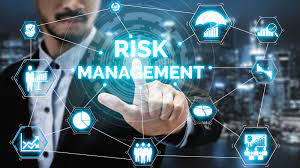
In today’s era of rapid urbanization and digital transformation, cities are increasingly relying on intelligent technologies to ensure smoother traffic flow, enhance safety, and maintain law and order on the roads. One of the most impactful innovations contributing to this vision is the license plate recognition system. By combining artificial intelligence, computer vision, and automation, this technology has become a cornerstone of modern traffic management and law enforcement strategies.
Understanding License Plate Recognition Systems
A license plate recognition system (LPRS) is an advanced surveillance technology designed to automatically identify and record vehicle license plates using optical character recognition (OCR) and image processing. These systems use cameras, sensors, and AI-driven algorithms to capture plate images in real time, even under challenging conditions such as poor lighting, high speed, or adverse weather. Once detected, the data is compared against databases to verify vehicle registration, detect violations, or assist in crime investigations.
The evolution of this technology has transformed traditional traffic enforcement into a more proactive, data-driven approach. With real-time analytics and automated reporting, authorities can track vehicle movements, identify suspects, and manage urban mobility with unmatched precision.
The Role of License Plate Recognition in Smart Cities
In the modern smart city framework, license plate recognition system technology plays a pivotal role in ensuring intelligent mobility and security. Integrated with IoT infrastructure and AI-based analytics, these systems help in traffic flow optimization, toll collection automation, and monitoring of restricted areas. They are also used for smart parking solutions, allowing vehicles to enter or exit based on number plate authentication, thereby minimizing manual interventions and reducing congestion.
Transforming Public Safety is one of the key objectives of implementing such systems. Real-time monitoring and automated alert generation enable quick response to incidents like stolen vehicles, hit-and-run cases, and unauthorized entries. Furthermore, integration with central command centers allows law enforcement agencies to coordinate effectively during emergencies, leading to safer urban environments for citizens.
How License Plate Recognition Works
The functionality of a license plate recognition system is based on the seamless coordination of multiple technologies:
- Image Capture – High-resolution cameras positioned at entry/exit points, highways, or toll plazas capture images of vehicles.
- Detection – The system identifies the location of the license plate within the captured image using deep learning-based object detection models.
- Character Segmentation and Recognition – OCR algorithms read and interpret alphanumeric characters on the plate.
- Database Comparison – The extracted data is matched against a pre-existing database to verify vehicle ownership, detect rule violations, or track vehicles of interest.
- Automation and Alerts – Automated alerts are sent to control centers or patrol units in case of discrepancies or violations.
This workflow not only ensures accuracy but also reduces the dependency on human monitoring, making traffic enforcement more efficient and corruption-free.
Applications Across Industries
While the most common use of license plate recognition system technology is within traffic and law enforcement, its applications extend beyond that.
- Parking Management: Automated entry and exit systems in commercial complexes, airports, and malls use LPRS to facilitate seamless operations without manual ticketing.
- Toll Collection: Electronic toll collection systems integrate LPRS to automate payments, reduce congestion, and prevent revenue leakage.
- Security and Surveillance: Gated communities, corporate campuses, and logistics hubs rely on LPRS for vehicle authentication and access control.
- Fleet Management: Logistics companies use LPRS to monitor fleet movements, improve delivery accuracy, and enhance route optimization.
Benefits of License Plate Recognition Systems
The widespread deployment of license plate recognition system technology has delivered measurable benefits for both governments and private organizations.
- Automation and Efficiency – Reduces manual intervention in vehicle monitoring and violation detection.
- Accuracy and Reliability – AI-based recognition ensures precision even in complex conditions.
- Enhanced Security – Enables real-time tracking and alerts for suspicious or stolen vehicles.
- Revenue Management – Helps in better toll and parking fee collection through automation.
- Traffic Flow Optimization – Provides data insights for intelligent traffic management and congestion reduction.
Moreover, these systems contribute significantly to environmental goals by minimizing idle times, thus reducing carbon emissions in urban areas.
Integration with AI and Analytics
The latest generation of license plate recognition system solutions leverages AI, machine learning, and big data analytics to provide predictive insights and adaptive functionalities. Deep learning models can distinguish between regional plate formats, detect tampering attempts, and even identify the type and color of vehicles.
AI also allows the system to learn continuously from captured data, improving recognition rates over time. Integration with video analytics platforms enables simultaneous analysis of multiple feeds, making city surveillance networks smarter and more responsive.
Transforming Public Safety Through Intelligence
Transforming Public Safety lies at the heart of AI-driven LPRS technology. It bridges the gap between surveillance and actionable intelligence. With centralized data aggregation, city administrators and law enforcement can identify trends, anticipate potential risks, and implement targeted measures to maintain safety. For example, identifying recurring vehicles near sensitive locations or detecting patterns in stolen vehicle movement helps in preemptive crime prevention.
Improving Traffic Conditions and Urban Mobility
As cities continue to grow, managing traffic congestion and road safety becomes increasingly complex. The license plate recognition system simplifies these challenges by automating monitoring and enabling data-based decisions. Integration with adaptive traffic signals and smart cameras ensures better lane discipline, improved traffic signal timing, and effective violation management.
Furthermore, combining LPRS with AI-based Traffic Solutions ensures smoother vehicular flow and reduces accidents. By providing authorities with live insights into vehicle density and movement, it becomes easier to manage traffic during peak hours or emergencies.
Leading Companies Offering License Plate Recognition Systems
The growing demand for intelligent traffic solutions has led to the rise of several technology providers offering advanced license plate recognition system solutions. Some of the top companies in this space include:
- Vehant Technologies – A leading Indian company specializing in AI-based traffic enforcement, security, and surveillance systems. Vehant’s LPRS solutions integrate seamlessly with smart city frameworks, offering unmatched accuracy and reliability.
- Kapsch TrafficCom – Known for its global expertise in intelligent transportation systems and automated tolling solutions.
- Siemens Mobility – Offers integrated smart infrastructure with advanced traffic enforcement and monitoring technologies.
- Jenoptik – A major provider of optical and digital traffic enforcement systems globally.
- Neology Inc. – Focused on smart mobility solutions, including LPRS and electronic toll collection systems.
These companies continue to innovate by merging AI, cloud computing, and real-time analytics to make road networks safer, smarter, and more efficient.
The Future of License Plate Recognition Technology
Looking ahead, the license plate recognition system will continue to evolve as part of the broader smart city ecosystem. Future advancements will include 5G-enabled data transmission, cloud-based monitoring, and deeper integration with autonomous vehicle networks. As AI algorithms become more refined, these systems will not only recognize plates but also assess driving patterns and predict potential hazards.
The fusion of LPRS with edge computing and blockchain could further enhance data security and reduce latency in real-time applications. Governments and organizations investing in these innovations will pave the way for safer roads and smarter urban mobility.
Conclusion
The license plate recognition system has emerged as the backbone of smart traffic management, transforming how cities handle mobility, enforcement, and safety. Its blend of AI-driven analytics, automation, and scalability makes it indispensable for modern urban infrastructure. As technology continues to advance, these systems will play an even more vital role in shaping sustainable, intelligent cities where public safety, efficiency, and innovation go hand in hand.
By integrating AI-based Traffic Solutions and data analytics, cities can ensure seamless traffic control, enhanced law enforcement, and improved citizen experiences—laying the foundation for the truly smart cities of tomorrow.

